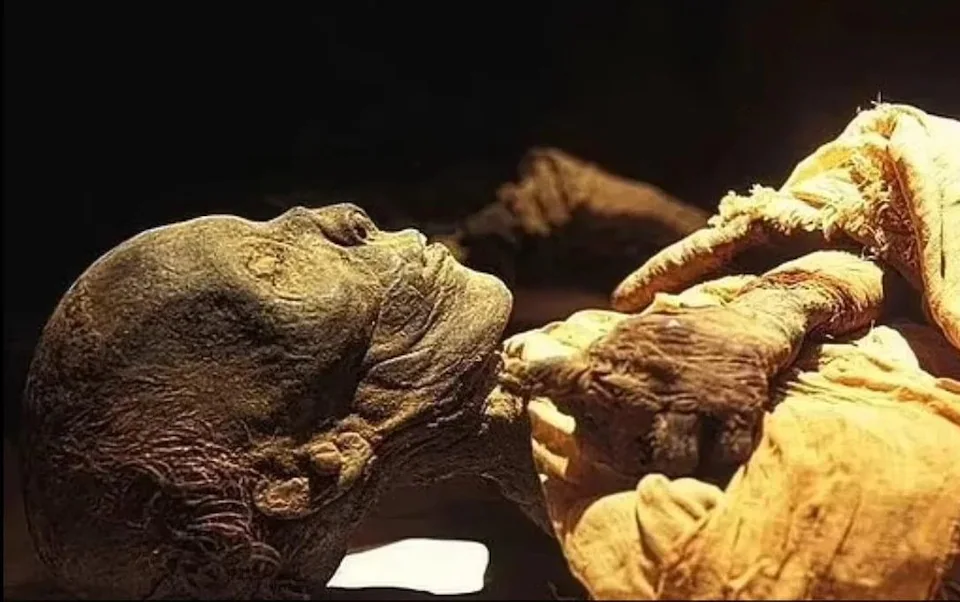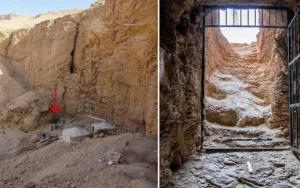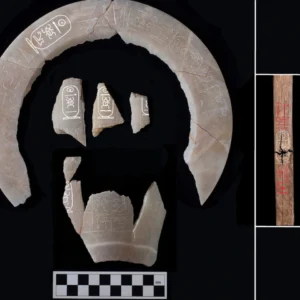The Historic Context of Tutankhamun’s Reign
Tutankhamun, often referred to as the “boy king,” ascended to the throne at a mere nine years of age, ruling from approximately 1332 to 1323 BCE during the 18th Dynasty of ancient Egypt. His reign is significant not only due to his young age but also because it occurred during a particularly tumultuous period in Egyptian history. This era was marked by considerable socio-political upheaval, largely stemming from the controversial reforms introduced by his predecessor, Akhenaten, who championed monotheism centered on the worship of Aten, the sun disk.
The shift in religious practices initiated by Akhenaten led to widespread social and political unrest, as traditional polytheistic beliefs were eroded. Upon Tutankhamun’s ascension, he sought to restore the ancient norms and values, including the veneration of the multi-faceted deities that previously dominated Egyptian culture. He moved the capital back to Thebes, thereby reinstating the city as a political and religious epicenter, which was crucial for stabilizing the nation.
Despite his efforts for restoration, Tutankhamun’s term was short-lived; he died unexpectedly around the age of eighteen. The circumstances surrounding his death remain a subject of speculation, with theories ranging from accidental injury to assassination. His early demise prompted a significant power struggle as various factions vied for influence following his passing. Additionally, the young pharaoh’s legacy, though seemingly overshadowed during his rule, gained immense interest in modern times, especially after the discovery of his tomb in 1922. This remarkable archaeological find not only illuminated the wealth and artistry of ancient Egypt but also rekindled a global fascination with Tutankhamun’s life and reign, establishing him as one of ancient history’s most enduring figures.
The Discovery: Unveiling the Tomb
The discovery of Tutankhamun’s tomb in 1922 by British archaeologist Howard Carter marked a pivotal moment in the field of Egyptology. Nestled in the Valley of the Kings, this tomb, designated KV62, was one of the last royal tombs to be found and remains one of the most significant. The momentous unveiling of the burial site sparked widespread excitement, drawing the attention of both scholars and the general public alike.
Using rigorous archaeological methods, Carter and his team meticulously examined the area, employing techniques that included systematic surveying and excavation. The tomb was discovered largely intact, shielded from grave robbers by the protective seals on its entrances. As Carter peered through the door, he famously remarked about the treasures that lay within, igniting imaginations around the world. The layout of the tomb revealed a series of chambers filled with impressive artifacts, including a magnificent golden sarcophagus, intricately designed jewelry, and ceremonial items that illuminated the richness of ancient Egyptian culture.
The contents of the tomb not only dazzled observers but also provided invaluable insights into the burial practices and beliefs of the 18th dynasty. Artifacts like the famous golden mask of Tutankhamun, along with chariots, weapons, and personal items, were meticulously cataloged and documented by Carter’s team, providing a treasure trove for researchers. Each item shed light on the life and reign of the young pharaoh, who ascended to the throne at a tender age and passed away mysteriously.
This extraordinary discovery fundamentally altered the landscape of Egyptology. It prompted further excavations across the region and sparked renewed interest in ancient Egypt’s history and culture, giving scholars a deeper understanding of the complex social and religious dynamics of the time. The uncovering of Tutankhamun’s tomb is not merely an archaeological triumph; it stands as a symbol of humanity’s enduring fascination with the past.
Significance of the Findings
The discovery of Tutankhamun’s tomb in 1922 by Howard Carter is considered one of the most significant archaeological finds of the 20th century. The artifacts and structures unearthed within the tomb provide a profound insight into the cultural, religious, and social frameworks of ancient Egyptian civilization. Each item, whether it be ornate jewelry, intricately designed furniture, or ceremonial vessels, showcases the exquisite artistry and craftsmanship prevalent during the 18th Dynasty. This period is notable for its remarkable achievements in art, architecture, and material culture, as epitomized by the artifacts discovered in Tutankhamun’s tomb.
Among the key findings, the iconic gold mask of Tutankhamun deserves special mention. This mask not only signifies the importance of the young pharaoh but also embodies the ancient Egyptians’ beliefs surrounding death and the afterlife. It reflects the idea that the preserved body, adorned with intricate gold and precious stones, would ensure the pharaoh’s safe passage to the afterlife. The craftsmanship of such artifacts illustrates not only the artistic skills of the artisans but also the technological advancements in metallurgy and design during the period.
Furthermore, the tomb’s layout and accompanying burial goods, such as chariots and weapons, reveal insights into the societal structure and practices surrounding mortality. These findings emphasize the significance of funerary customs and highlight how the ancient Egyptians perceived life after death. They also contribute to our overall understanding of daily life in this era, including the social hierarchy, religious beliefs, and the importance of material wealth in funerary practices.
The impact of these findings extends beyond academia; they have sparked widespread interest in Egypt’s archaeological heritage, boosting tourism and global fascination with ancient Egypt. The artifacts now housed in museums serve as enduring reminders of a rich and complex civilization that continues to captivate scholars and enthusiasts alike.
The Future of Egyptian Archaeology
The discovery of Tutankhamun’s tomb in 1922 marked a significant milestone in the field of Egyptology, leading to heightened interest in ancient Egypt and its rich archaeological heritage. Moving forward, the future of Egyptian archaeology is poised for significant developments, driven by new technology and innovative methodologies. Archaeologists are increasingly utilizing advanced techniques such as Ground Penetrating Radar (GPR), drone imaging, and 3D scanning to explore previously inaccessible areas and uncover hidden artifacts without damaging sensitive sites.
Ongoing and future excavation projects seek to build upon the excitement generated by Tutankhamun’s tomb. For instance, the Valley of the Kings continues to attract international interest, with teams from various nations collaborating to meticulously survey and excavate this historic landscape. These efforts not only aim to find additional tombs but also to construct a more comprehensive narrative of Egypt’s past, highlighting the importance of interdisciplinary approaches in archaeology.
Nonetheless, the field faces several challenges, including rising environmental concerns and increased tourism pressure on archaeological sites. Preservation of the delicate artifacts and structures found in Egypt is under constant threat from both natural elements and human activities. Thus, archaeologists and conservationists must advocate for policies that prioritize sustainability, emphasizing the need for a balance between promoting tourism and safeguarding invaluable cultural heritage.
Ethical considerations also play a central role in the future of Egyptian archaeology. As excavations continue, engaging with local communities and ensuring that their perspectives and rights are respected is critical. Additionally, provenance research must be prioritized to mitigate the risks of looting and illicit trade in cultural artifacts. By addressing these challenges and embracing new technologies, the future of Egyptian archaeology can lead to further discoveries that enrich our understanding of ancient civilizations while fostering global appreciation for cultural heritage.



